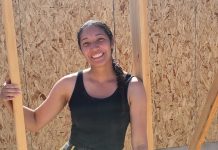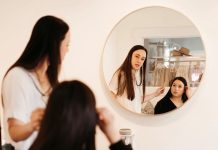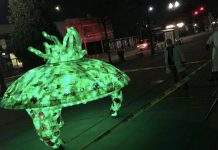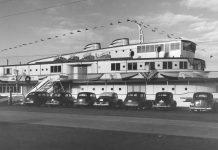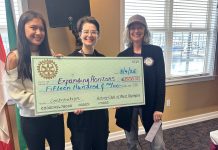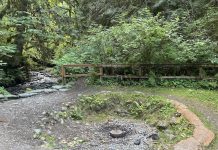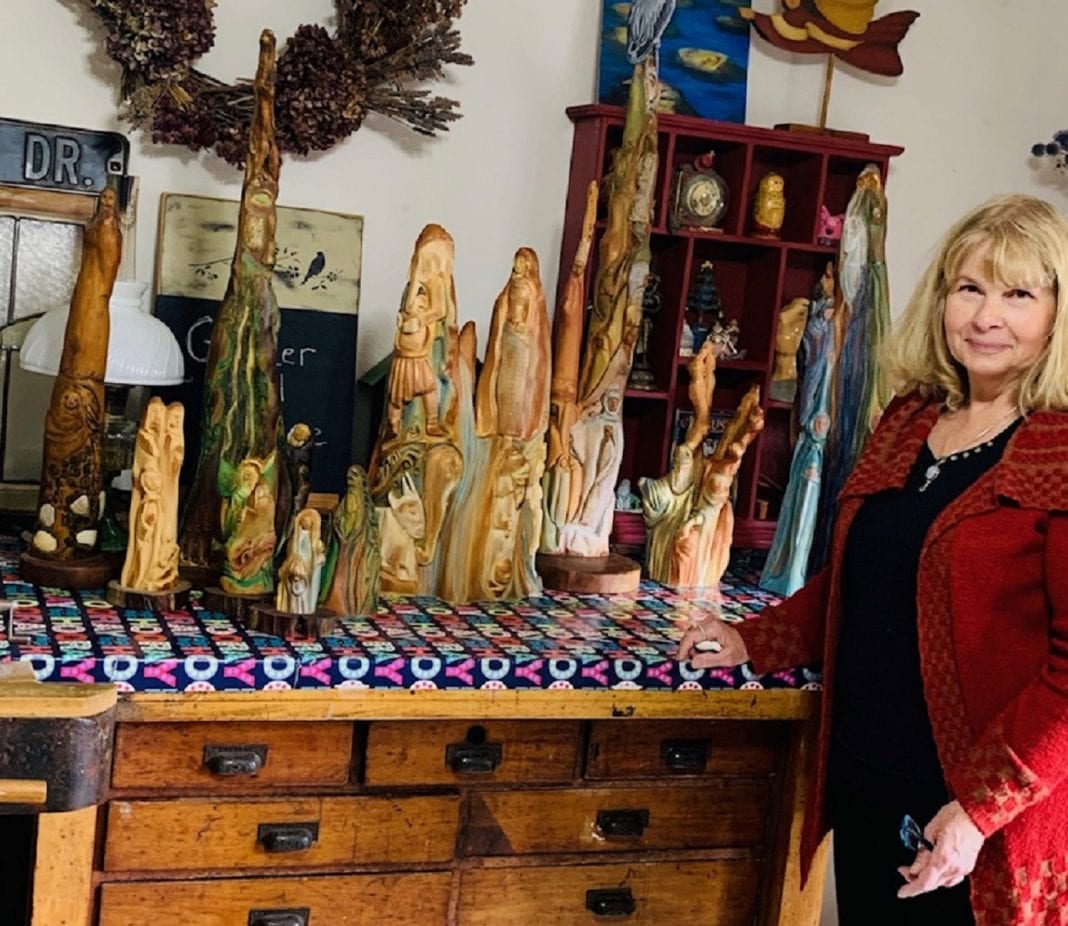Talented and ever-evolving artist, Pam Roebuck creates a breathtaking array of visual stories carved out of the roots of cypress trees (called cypress knees). Sharing the gift of her light, she takes us on an otherworldly journey through her art, which is both spiritual and mythological.
The self-taught woodcarver, writer, painter, and student of both mythology and world religions, has used a variety of mediums to express herself over the years.
Much of her art evokes symbology from within Buddhism, Hinduism and Celtic mythologies, as well as Native American cultures. As a child, she was drawn to these concepts in picture books even before she could read.

Known as a visionary artist, Roebuck’s work emerges from personal visions. She begins a project by focusing on the piece until the images appear to her through an almost meditative process. “If I had to do it from memory, or a picture, I couldn’t do it. When I see the images clearly, I begin carving or painting. They just come to me,” she says.
Though originally from Connecticut, Roebuck has called Washington home for most of her life. She has also lived in California, along with a brief move to a small farm in Idaho and back again.
An ever-present connection to the spiritual realm and Native disciplines took her on a pilgrimage to Peru in the late 1980s. She traveled with a group led by Dr. Toby Weiss and joined by Sun Bear of the Chippewa Nation. It is here she would meet a friend and kindred spirit, Susan McCune.
They were first drawn together by the recurring theme of light. As Roebuck performed the Cherokee Dance of Light, taught by Dhyani Ywahoo, of the Eastern Tsalagi Cherokee Nation, Susan asked to join in, having learned the dance from a different teacher.
The two would become partners in what would later be a series of workshops and sweat lodges, teaching sacred dances and making ceremonial rattles in both Malibu, California and Redmond, Washington.
The rattles made from gourds were cleaned, sanded and dried out before drilling a hole for contents to be added that created sound. They were often painted elaborately for sacred gatherings like fertility ceremonies and other dances.
During this time as she was raising a family, Roebuck continued making rattles and teaching dances but also began making drums.
Her first teacher, Lakota elder Noah Long Crane, taught her the story of the drum from his people. He said to her, “Most people can go out and buy a drum. You have to make yours.”
After seeking a local drum teacher, she found one in Seattle. There, she would indeed make her drum and start the process of making drums for others.
The drums, made from cedar hoops and different animal hides, were often painted. She would give the hoop to the person the drum was for and ask them to dream with it until they saw their animal. Once they saw their animal, whether it was bison, or deer, or elk, that’s the hide she would make the drum out of.
It wasn’t until the mid-1990s when the family moved to Idaho that she saw her first cypress knee in a wood carving shop in Boise. The wood seemed to speak to her as she envisioned the figures upon it.
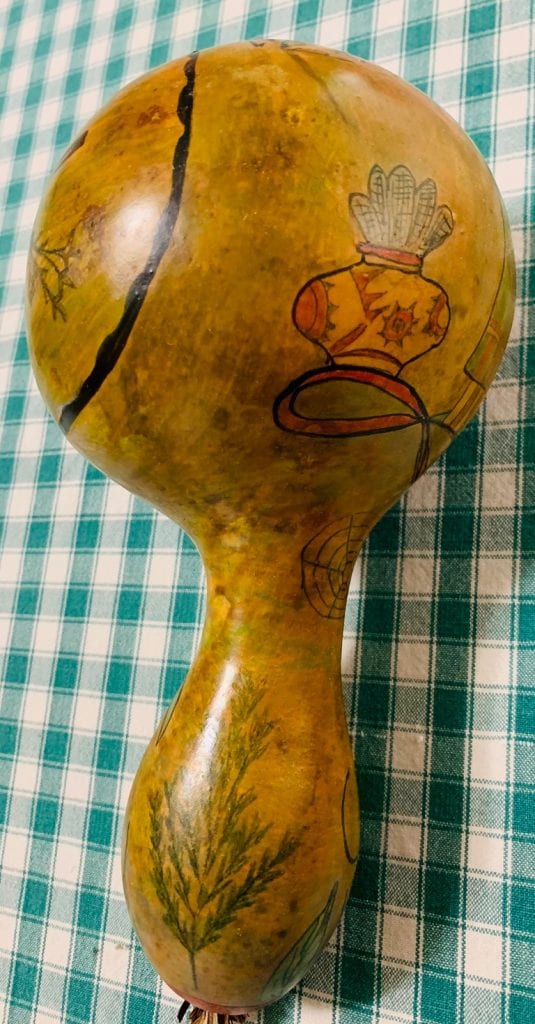
Since then, cypress knees have become her primary medium. The unique wood is a part of the root that grows above the water line in swampy areas native mostly to the southeastern part of the United States. A few at a time can be carefully removed without doing any harm to the cypress trees.
“Oftentimes, I will get a name for a carving before I start. After I outline the images in the wood, I begin the process of carving,” says Roebuck. “Before any paint is applied, I make sure there is a flow from one object to another, giving the carving a sense of the water element that it came from.”
In several instances, Roebuck may have thought a piece was finished but has been drawn back to add more detail. Sometimes it depends on the texture of the wood itself since every piece is so different.
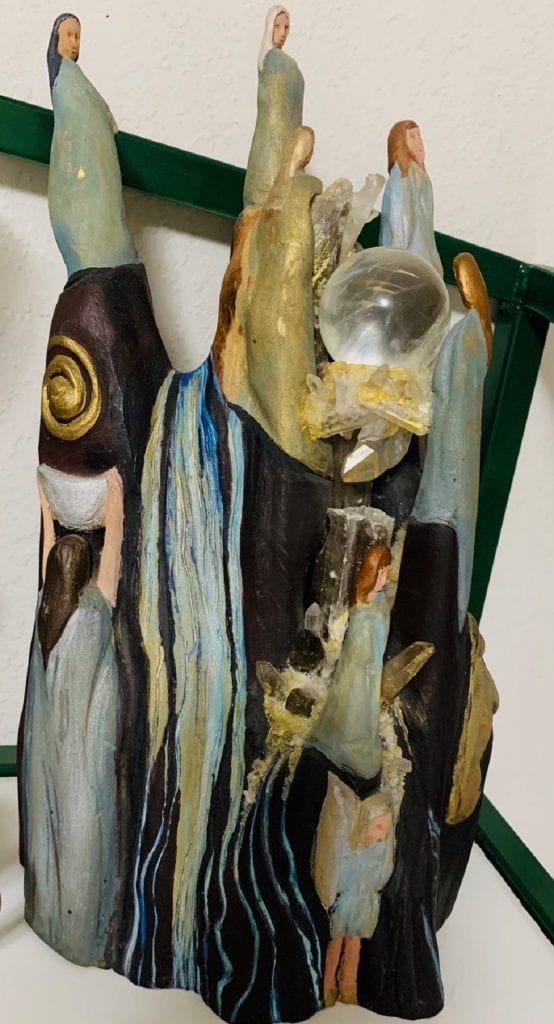
It is challenging to put a price on the rare sculptures since neither the wood nor the art can be replicated or commissioned. “I only do what the wood asks me to do. If someone came to me and asked for an elk on a carving, I can’t guarantee that. That’s what makes it so difficult to part with, or put a price on,” she says.
Roebuck has exhibited her work in a variety of places, including shows at Lakewold Gardens, the International Festival, both in Lakewood and the Monarch Sculpture Gardens, in Olympia.
Permanent displays reside in the homes of friends and family, including one piece that belongs to a permanent collection in the gallery of well-known artist Tom Boatright, in Tumwater.
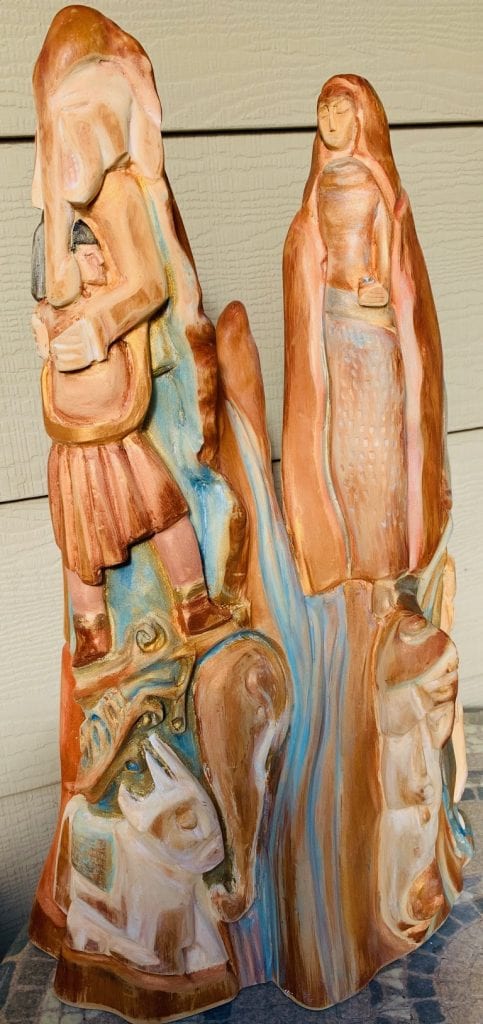
“I guess you could call me an introverted artist. I create all of these things because I just have it in me to do that, but I’m not going out and trying to sell anything. At least, not yet,” she says.
Luckily, a transition may be coming. As Roebuck continues to explore venue opportunities that are a good fit and those that will honor her visionary art masterpieces, she’s also taken on the creative pursuit of writing children’s books. With one title finished and a trilogy started, she’s begun to research publishing options.
“It is important at this time especially, to create beauty in whatever way it expresses itself. Through this dark night that we are experiencing, we can bring our own light,” says Roebuck.
Art allows us to express beauty and often has a way of helping overcome obstacles. It lets in light, especially when light-bringers like Pam Roebuck share their beautiful gifts with us. Send comments or inquiries for Pam here.

